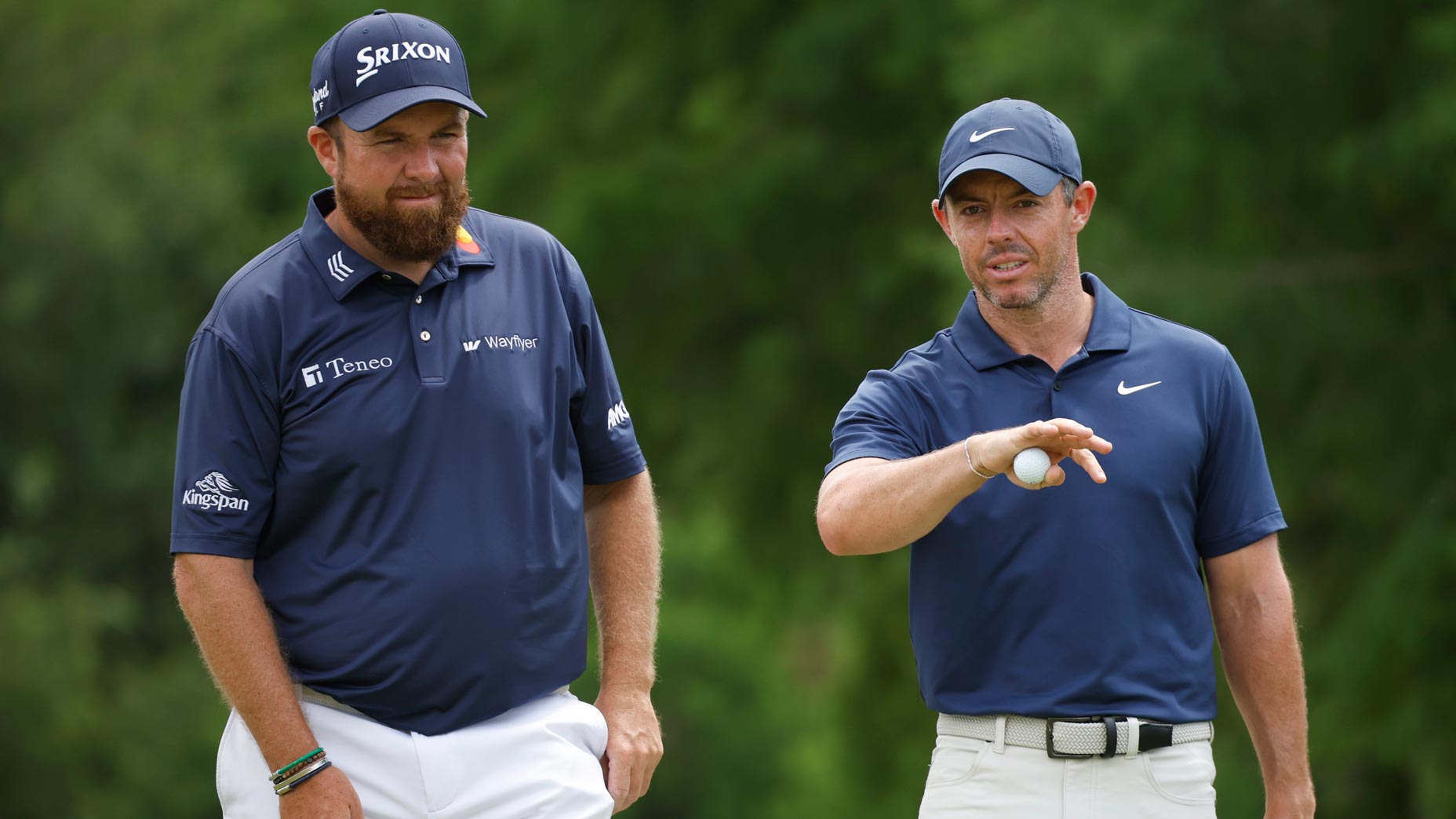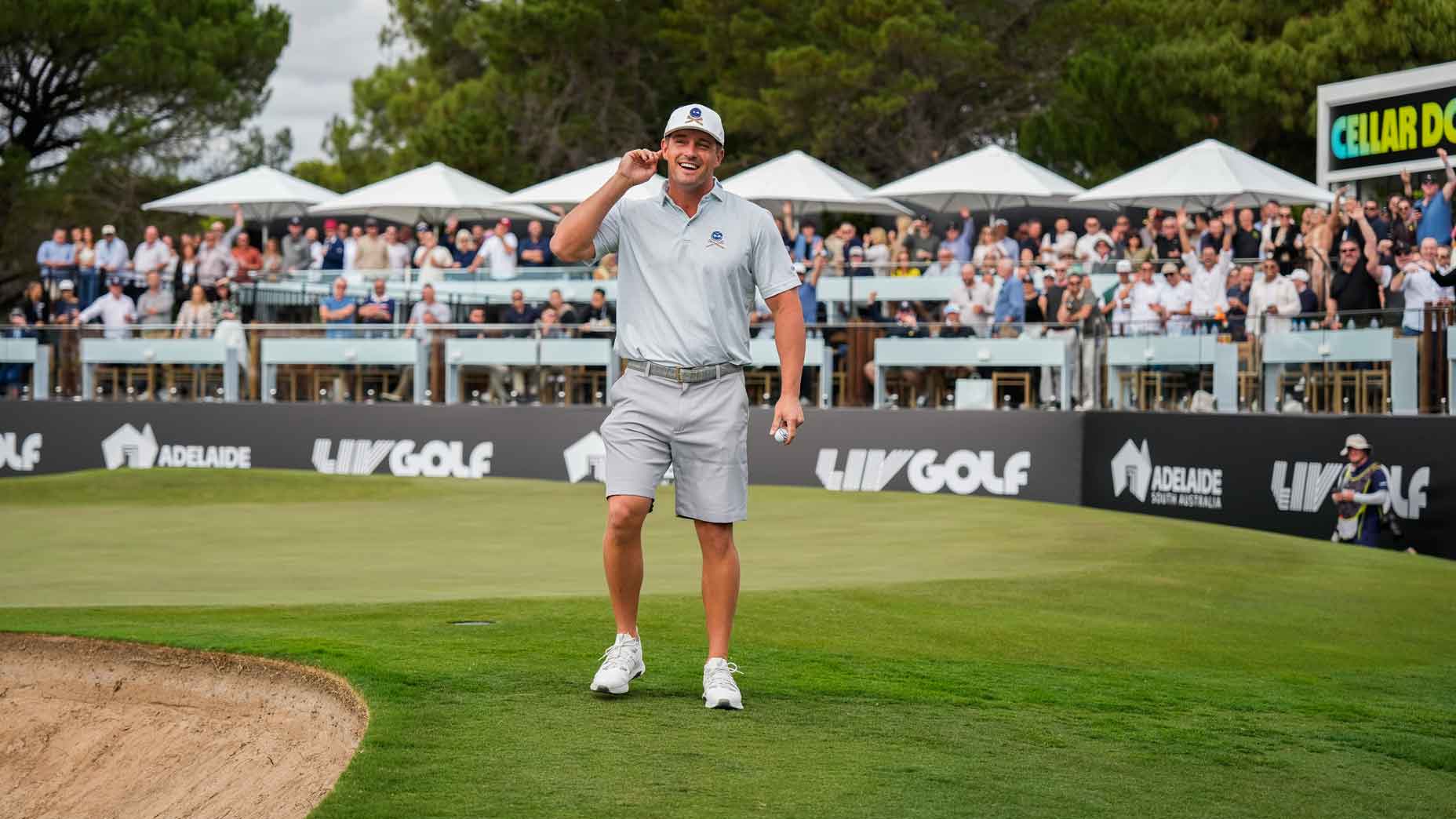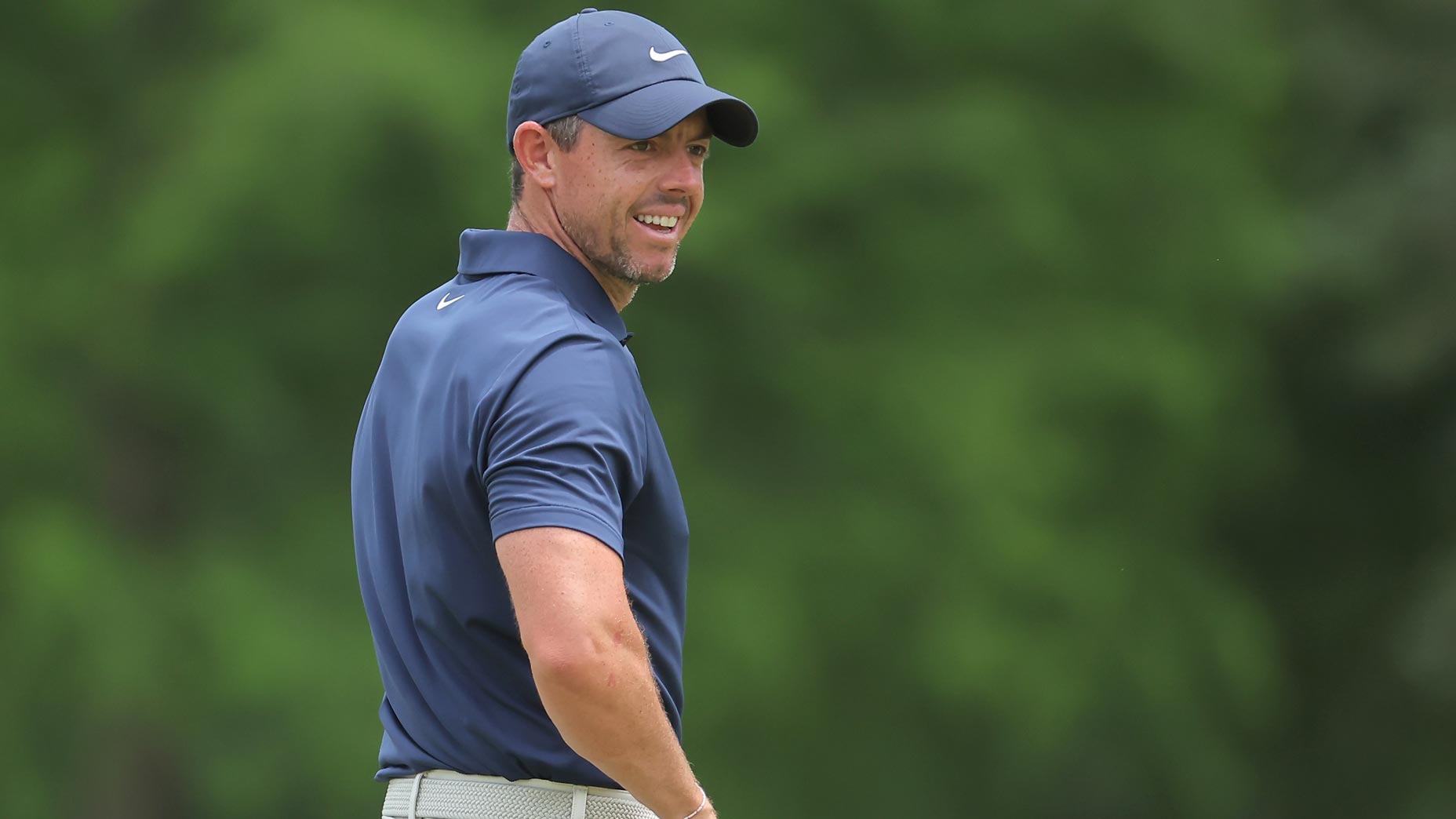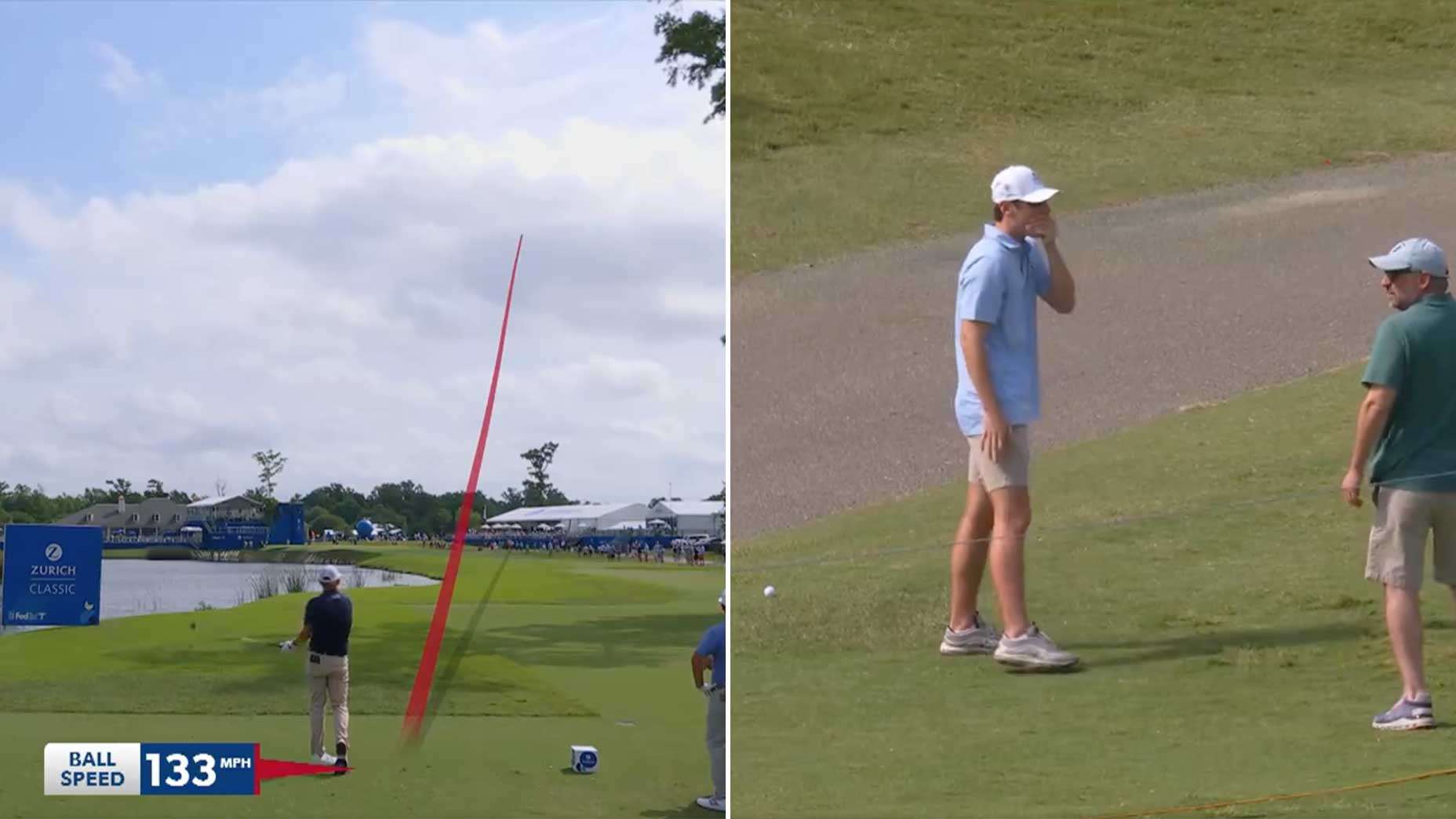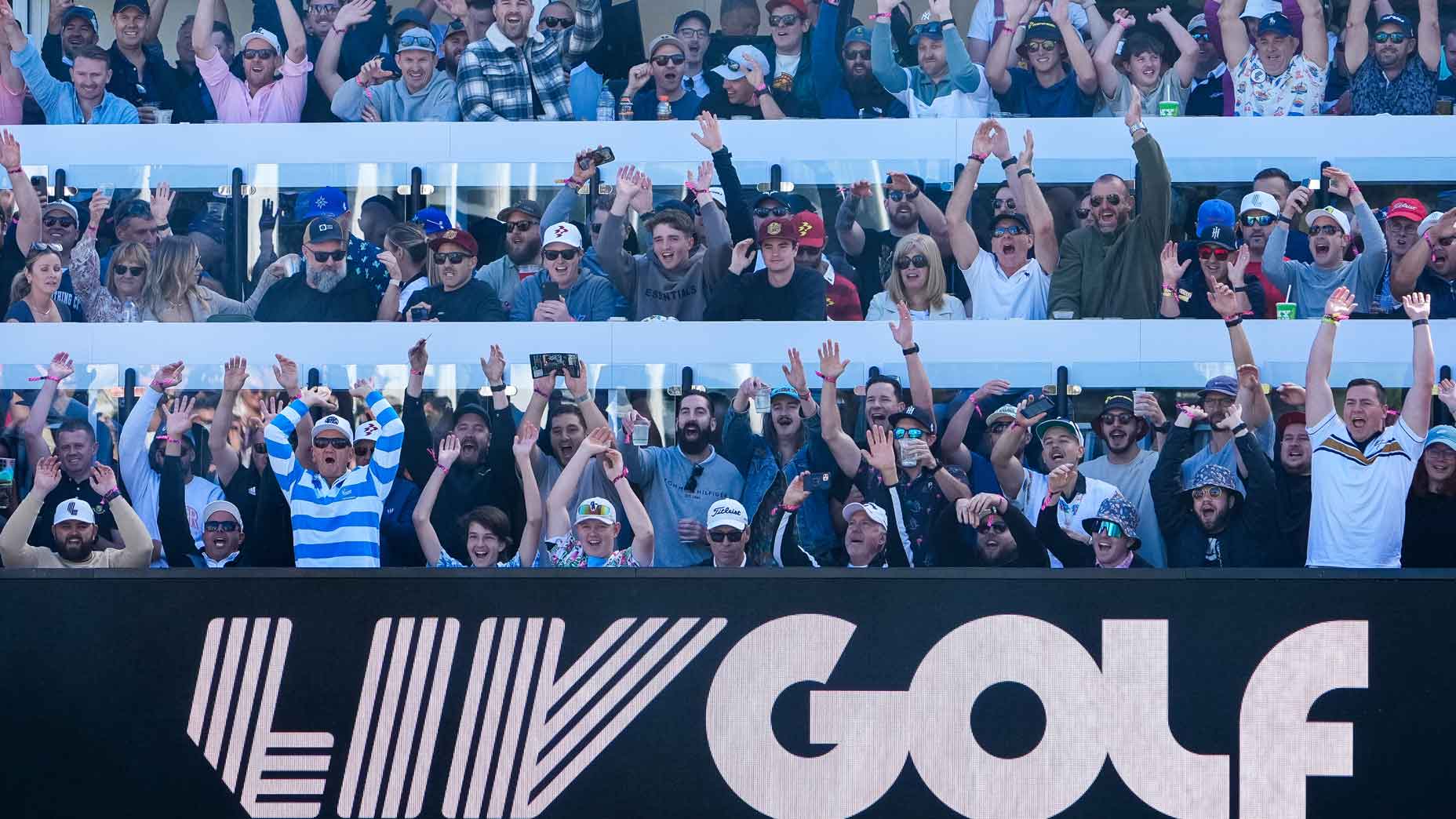Let’s start with four opinions masquerading as fact. The fourth concerns the subject of this dispatch — Dr. Phil, batting cleanup. But you can’t have a No. 4 hitter without a top of the order, and here it is.
1. The greatest golfer of the Heavy Metal Era (metal woods, hard ball) is Tiger Woods, by 20,000 leagues.
2. Its most exciting player, on this Monday morning in March, is Justin Thomas. (“That’s what I’m talking about! Woo!”) But in April it could be Rory McIlroy and in June it could be Dustin Johnson and in July, in a repeat performance from last year, it could be Jordan Spieth. It could be Tiger Woods.
3. The most underrated golfer of the Heavy Metal Era is Tiger Woods. He’s also the most underrated golfer of all time. You can argue (successfully) that no athlete has ever dominated his or her sport as Woods dominated golf. A British Open by eight, a Masters by 12, a U.S. Open by 15. The career Grand Slam by 24. The Tiger Slam. The second career Grand Slam by 29. Fourteen majors in 11 years. A book is needed to tell the rest.
4. To say that Phil Mickelson is the second-best golfer of the Heavy Metal Era is not much of a statement. Could Rory or Jordan or Justin or Dustin someday pass him? Yes, but in the meantime he’s way ahead of them, as he is Ernie Els and Vijay Singh. The real purpose of this paragraph is to declare something far more significant, and it follows directly from saying that Tiger Woods is the most underrated golfer of all time. And this is it: Phil Mickelson is the second-most underrated golfer of all time. Sorry, Billy Casper.

The astounding length and quality of Mickelson’s career has never been fully appreciated, and there are two main reasons for that. For one thing, our Philtalk goes sideways by off-course messes of his own making. No need to delineate them here and now — Google can do that for you and Tom Watson can help. For another, Phil has always been there. Yes, until the WGC Mexico event, it had been four years and seven months since his last win. But it wasn’t like he disappeared.
For years now, it has been fashionable in grillroom debates to say that Bill Casper, also of San Diego, was the most underrated golfer in the game’s history. You have maybe heard the names Bernard Langer or Bobby Locke or Hale Irwin mentioned when the second pitcher gets served during this particular discussion. But Phil, despite his wealth and fame, is wildly underrated.
We would have made this statement before Mickelson, who turns 48 on the Saturday of the U.S. Open, wrapped up his one-hole playoff victory over the 24-year-old Thomas in a World Golf Championship event in the thin air of a warm Mexico City afternoon. But the win, the 43rd of his 25-year Tour career, brings the subject to the first tee.
Mickelson, who often plays in dark colors and without sunscreen, looked red-faced and beat through 71 holes. HDTV is unforgiving. You could see the strain in his eyes and the hint of gray in his beard stubble. His walking was deliberate and his last-group threesome — he played with 21-year-old Shubhankar Sharma of India and 26-year-old Tyrrell Hatton of England — was put on the clock. Making things look easy is not Phil’s thing. Making wins memorable is.
Thomas posted 16 under by holing a 119-yard wedge shot for an eagle 2 on the final hole. Mickelson, playing about 40 minutes behind Thomas, made a nutty 4 on the par-4 14th. (Wildly offline tee shot, recovery shot through a hole in the branches only he could see, chip and a putt.) He made a two-putt birdie on the par-5 15th to go to 15 under. He holed a 20-foot birdie putt on 16 to get to 16 under. After a par on 17, he rolled in a 3-footer for par on 18 with a stroke that did not have a hint of yip in it. That yard of hell was as telling as anything he did all week. The greens were blotchy and uneven, the stakes were high and Phil’s stroke was pure, his neo-claw grip doing it all. He won the playoff by making a par to an unlikely Thomas bogey.
Those details from Mickelson’s Sunday afternoon are of course significant. They made for one of the most interesting days of this interesting golf year. But here’s the big picture. In January 1991 Mickelson won a Tour event as an amateur. For 27 straight years, without fail, he has been one of the top-50 golfers in the world, year after year after year. For many of those years, he has been among the top-five golfers. For a few of those years, he has been the second best. He has made — made — every Presidents Cup and Ryder Cup team of his career. He has had no major slumps. He has soldiered on through various injuries and illnesses. He has been remarkably responsive to fans, tournament after tournament. He has been a live-wire presence in scores and scores of press conferences. He has endured the heartbreak of his astounding six second-place finishes in his national championship. In a category that combines length of career with quality of play, only two or three players are ahead of Mickelson, Jack Nicklaus and Sam Snead for sure, and maybe Tom Watson.

Mickelson won with his kid brother, Tim, caddying for him. Last June, Mickelson and the only caddie he ever had as a pro, Jim “Bones” Mackay, parted ways. Mackay was part of the NBC announcing team in Mexico, at the lush Club de Golf Chapultepec. His insights into Mickelson the golfer added significantly to the broadcast. But just the fact that this remarkably successful duo broke-up — by mutual agreement, according to their own statements — tells you that life at the near-top had its share of tension. How could it not? “It’s been a tough go these last four years,” Mickelson told Steve Sands of NBC, moments after his birdie putt on the playoff hole lipped out. “I love the challenge.”
All elite golfers fall somewhere on the Arnold-Jack Play-Win Curve. Palmer could not play enough golf. Put him on the far left. Nicklaus could not tire of beating people. Although he is golf’s greatest champion, for his grace in victory and defeat, he earns his spot on the far right. Woods, of course, is near Nicklaus. Mickelson is far nearer to Palmer. Phil will keep playing even when he can’t beat people anymore. He’ll play at The Bridges, in Rancho Santa Fe, Calif., and decidedly private. He’ll play at Torrey Pines, down the hill and down the highway from The Bridges, and decidedly public. His abiding love of the game had to have a great deal to do with his most recent victory.
Mickelson has had a number of instructors in his pro career, notably Rick Smith, Butch Harmon and Andrew Getson. His swing has surely changed over the years and decades. But none of the changes have been anything like radical. He’s a big, strong man who makes, has always made, a big strong swing. What an example, for all these young players with their hard, fast skinny-guy swings. And you wonder: can those last? Regardless, there’s more than one way to do it. Mickelson’s swing is out of a great, time-tested tradition: Sam Snead, Julius Boros, Billy Casper, Seve Ballesteros, Ernie Els, Jack Nicklaus. Long and rhythmic. A thighs-and-arms swing. What a concept.
Much has been said, within the cloistered world of golf, about Mickelson’s winless drought, the longest of his career. But it wasn’t like he lost his game after winning the 2013 British Open. Nothing like it. He had second-place finishes in the 2014 PGA Championship, the 2015 Masters and the 2016 British Open. That was the year that Henrik Stenson shot 20 under at Royal Troon, three better than Mickelson, who was 11 ahead of the guy who finished third. With or without the WGC win, Mickelson has been playing well this year and nobody would have been surprised to see him contend at Augusta. Now you can almost count on it.
The most significant event of his year will be the U.S. Open in June at Shinnecock Hills, where he had a second-place finish to Retief Goosen in 2004. Only five golfers have won the modern career Grand Slam: Gene Sarazen, Ben Hogan, Jack Nicklaus, Gary Player and Tiger Woods. Mickelson needs a U.S. Open to add his name to the list. (Rory McIlroy needs a Masters win to join the club; Jordan Spieth a PGA.) Shinnecock Hills is far closer to a British seaside links course than the tree-lined courses that used to typify U.S. Open layouts. He has an uneasy relationship with the USGA — often unhappy with its course set-ups and some of its rules changes — and it has likely not helped his performance in the golf championship that historically has been considered the hardest one to win. If he never wins it, that’s OK. Sam Snead never won it, either. There’s something wrenching and beautiful about not having it all. A better test of a person’s humanity. Anyway, the Mickelsons — Phil and Amy — have a child, their oldest, Amanda, who is a freshman at Brown. You may remember her high school graduation last year. When Phil speaks of his any of his three children, it is with a different tone, a different sort of pride, than you hear him on any other subject.
Golfers, famously, don’t like to get ahead of themselves. Mickelson does. He has often intimated that he uses his early events to prepare himself for the Masters, and he is surely thinking already of the four majors still to come this year. He has won five majors: three Masters, one British Open, one PGA Championship. Thirteen players have six or more.
In victory on Sunday in Mexico City, Mickelson said (in English), “I don’t think that this is the peak. I think I’m going to continue to get better.”
He doesn’t really need to get better. His best golf is more than good enough. Justin Thomas will tell you that, and he’s the best player in the game right now.
Michael Bamberger may be reached at mbamberger0224@aol.com.


